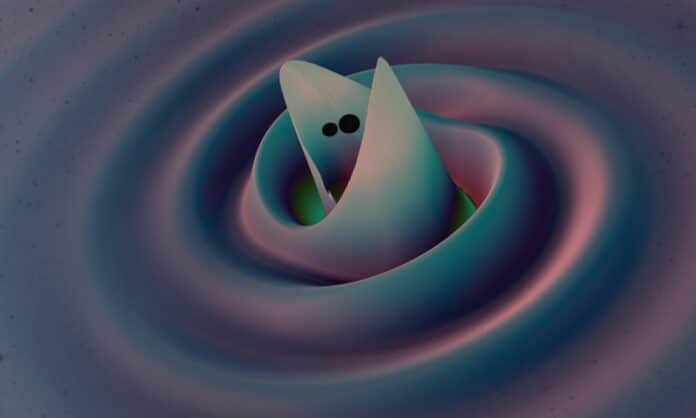One of the universe’s most unusual phenomena is black holes. The chirping sound that two black holes make when they merge can be heard using gravitational-wave detectors; about 70 such chirps have been discovered so far.
The “ocean of voices” in which chirps are thought to predominately occur in two universal frequency ranges, according to a team of researchers at the Heidelberg Institute for Theoretical Studies (HITS).
Merging black holes generate gravitational waves of increasing frequency, the so-called chirp signal. Scientists can determine the so-called “chirp mass,” a mathematical amalgamation of the two distinct black hole masses, by analyzing this frequency variation (the chirp).
Black holes that are merging are currently considered capable of having any mass. However, according to the team’s models, some black holes arrive in normal masses and produce universal chirps.
Fabian Schneider, who led the study at HITS, said, “The existence of universal chirp masses not only tells us how black holes form. It can also be used to infer which stars explode in supernovae.”
In addition, it offers new ways for scientists to evaluate the universe‘s accelerated cosmic expansion and insights into the supernova mechanism, hazy nuclear and stellar physics, and the supernova mechanism itself.
The progenitors of black holes that eventually merge are born in binary star systems and go through multiple events of mass exchange between the parts, especially since both black holes are products of stars that have lost their protective layers.
Philipp Podsiadlowski from Oxford University, second author of the study and Klaus Tschira Guest Professor at HITS, said, “The envelope stripping has severe consequences for the final fates of stars. For example, it makes it easier for stars to explode in a supernova and leads to universal black hole masses as now predicted by our simulations.”
The “stellar graveyard”—a collection of all known masses of the neutron-star and black-hole remnants of large stars—is expanding swiftly due to continuous gravitational-wave searches and the ever-increasing sensitivity of gravitational-wave detectors. In particular, a gap in the chirp mass distribution of merging binary black holes appears, and evidence for peaks at about 8 and 14 solar masses appears.
These features correspond to the universal chirps predicted by the HITS team. Any features in the distributions of black-hole and chirp masses can tell us much about how these objects have formed.
The HITS team could now show that – regardless of the chemical composition – stars that become envelope-stripped in close binaries form black holes of <9 and >16 solar masses but almost none in between.
Fabian Schneider said, “When updating my lecture on gravitational-wave astronomy, I realized that the gravitational-wave observatories had found first hints of an absence of chirp masses and an overabundance at exactly the universal masses predicted by our models. Because the number of observed black-hole mergers is still rather low, it is not clear yet whether this signal in the data is just a statistical fluke or not.”
Journal Reference:
- Fabian R. N. Schneider, Philipp Podsiadlowski, and Eva Laplace: Bimodal Black Hole Mass Distribution and Chirp Masses of Binary Black Hole Mergers. The Astrophysical Journal Letters, 950, 2, DOI 10.3847/2041-8213/acd77a
